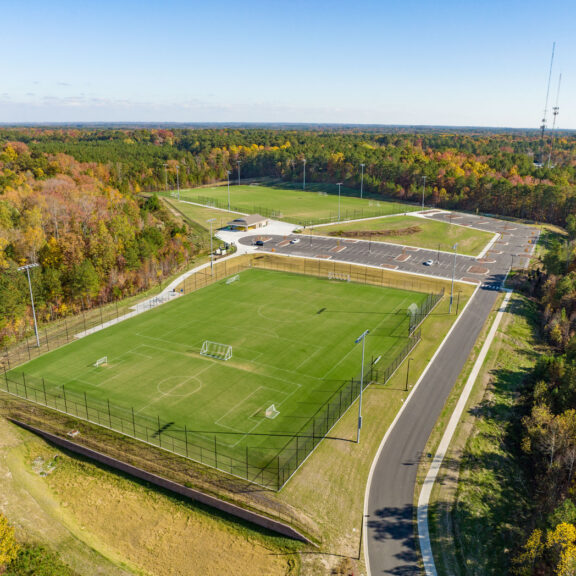I don’t normally pack bug spray, chest waders, and a machete to prepare for my day at work, but these items are commonly used by Timmons Group’s Stream Team on a day spent in the field. I recently joined a few members of our team on a site visit to gather existing conditions data at a stream restoration site in Henrico County. Here’s what a typical day looks like:
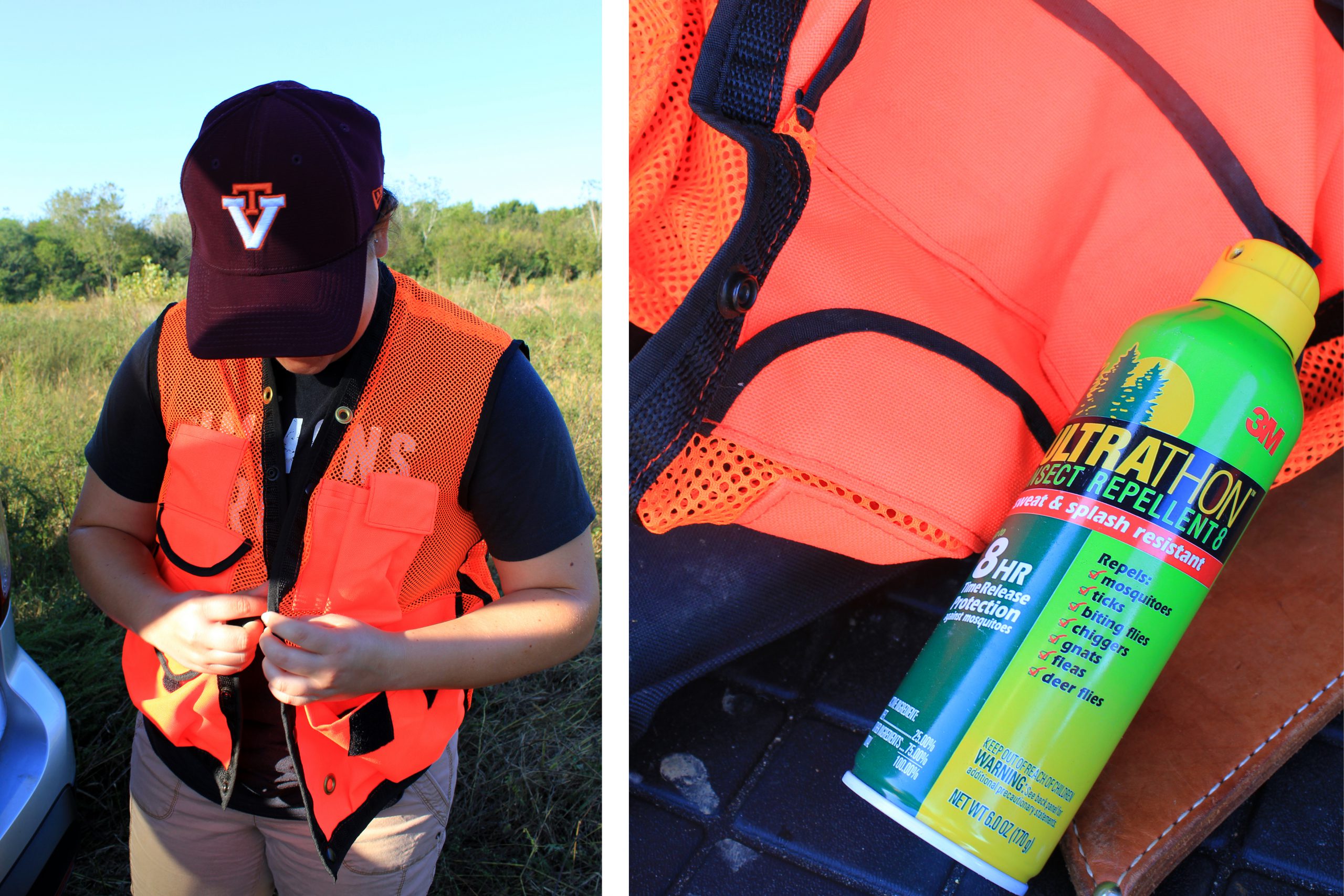
Getting ready for our site visit with members of our Stream Team. Bug spray is a must!
Before the stream restoration design can begin, our team needs to assess the severity and cause of the impairment. As you can see, the existing banks are badly eroded, contributing a significant amount of pollutant-laden sediment to the waterway and resulting in habitat depletion within the stream.
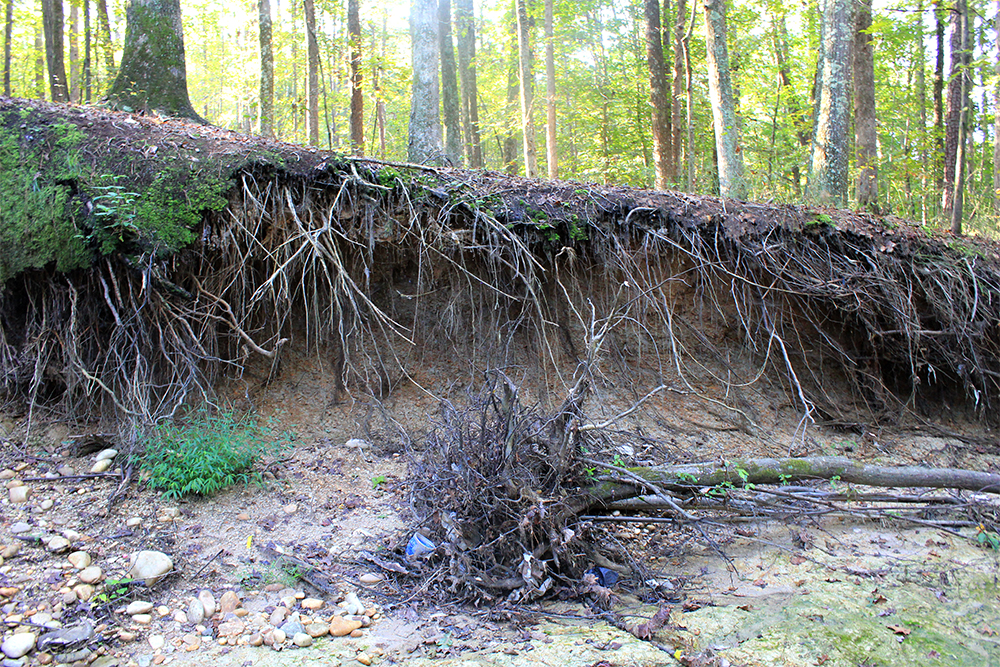
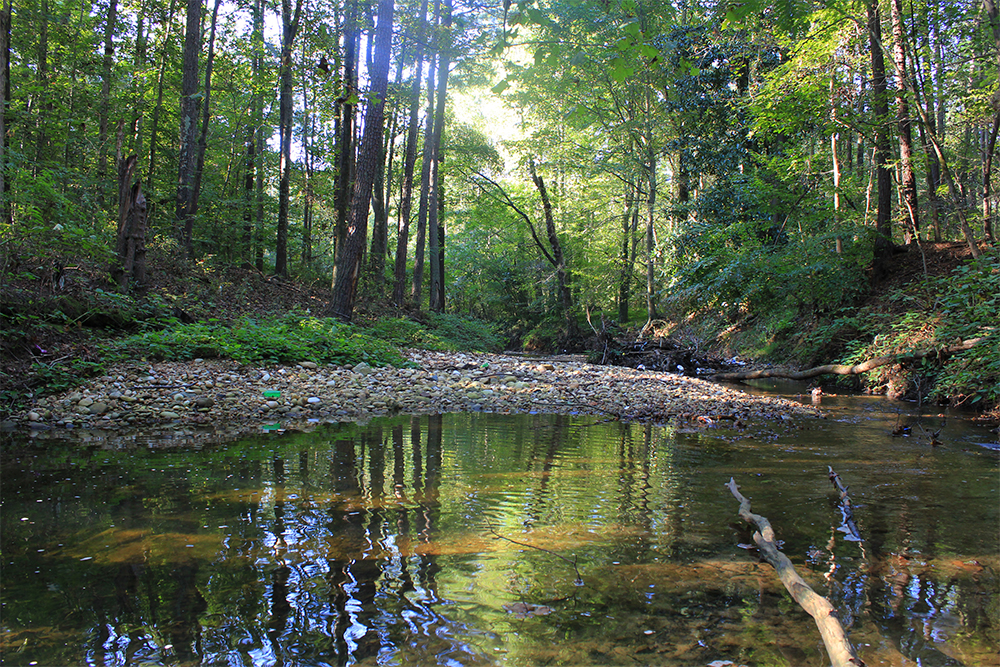
Our Stream Team spent the first part of the day walking the stream identifying and flagging several representative riffles and pools to take cross section measurements of later in the day.
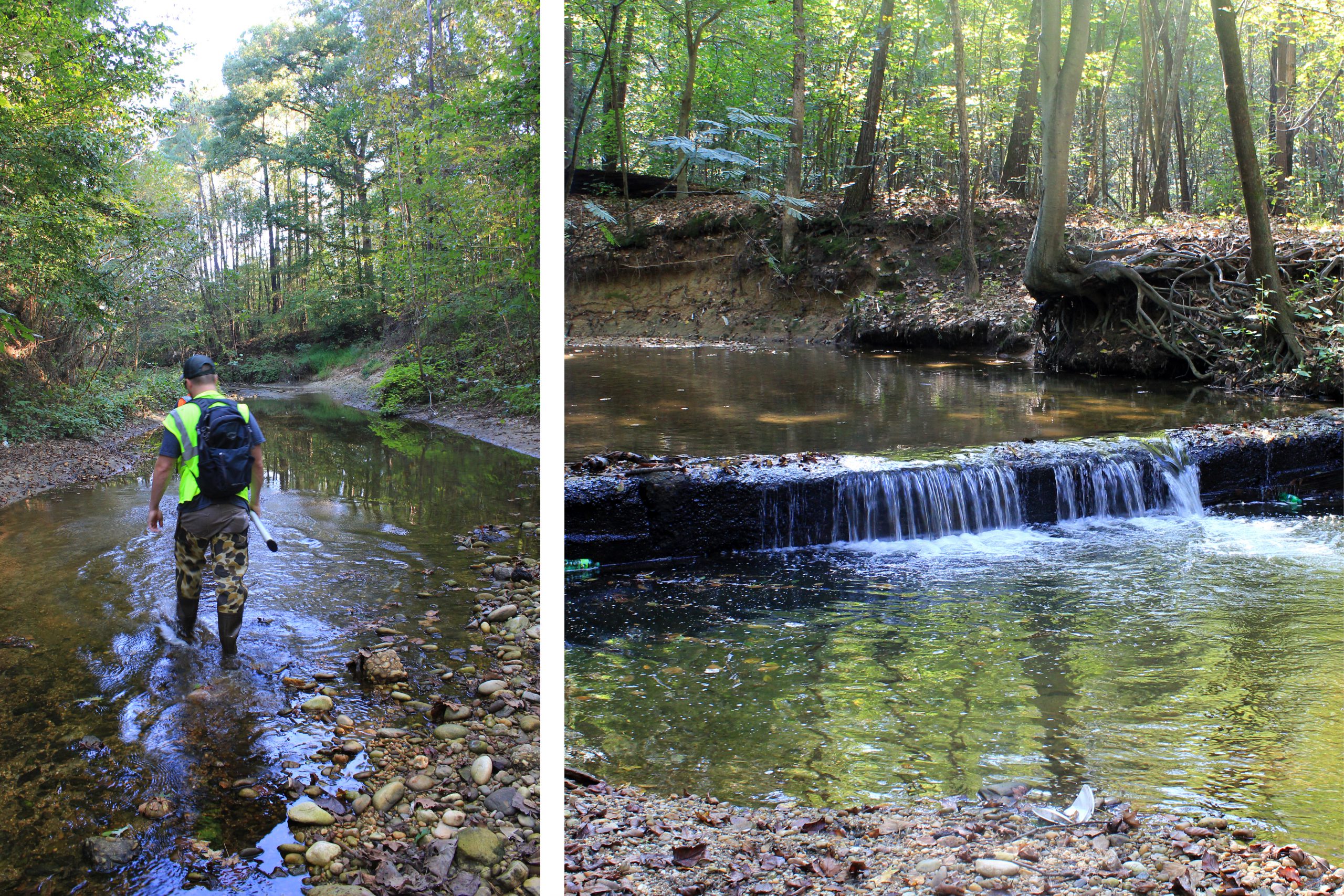
After flagging the cross section locations (and stumbling across a radiator, turkey tracks, hubcaps, tires, and golf balls in the stream) it was time to start collecting our data.
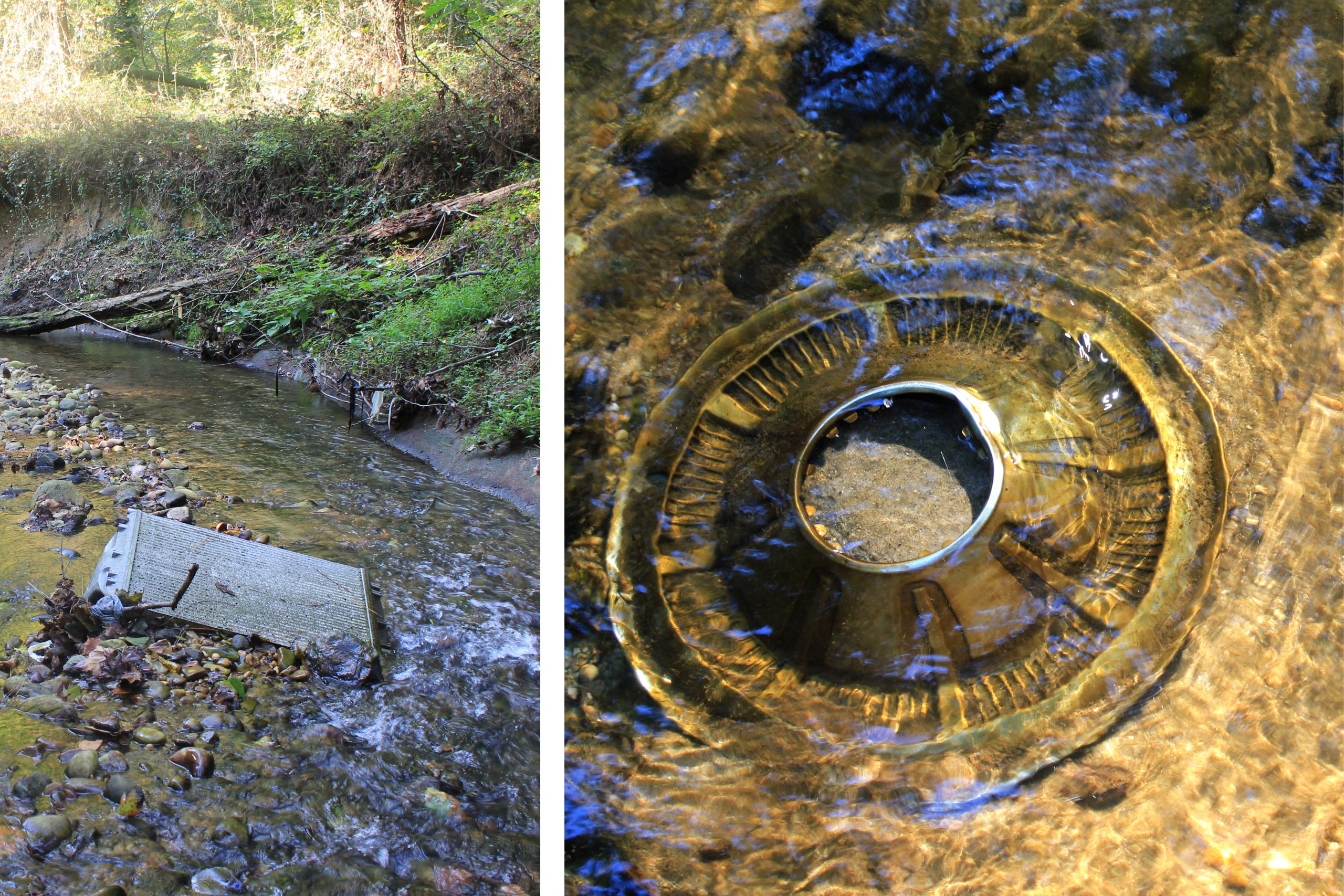
A few of our random stream finds.
Cross Section Measurements
The existing cross sections are used to identify bankfull features and to measure impaired channel dimensions such as width/depth ratio and cross-sectional area. This is done along the stream in several riffle and pool locations.
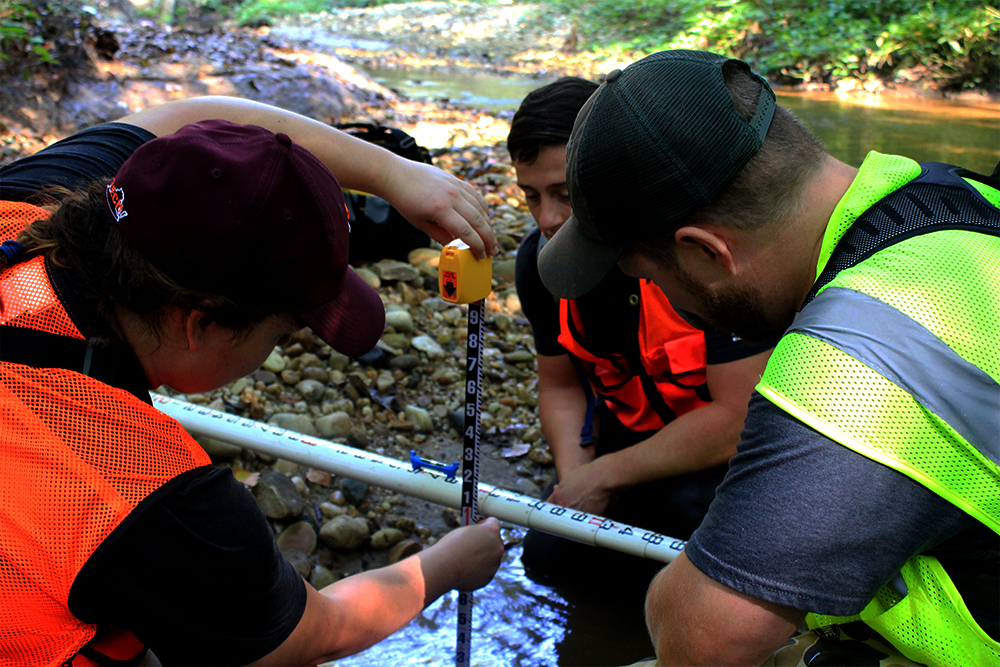
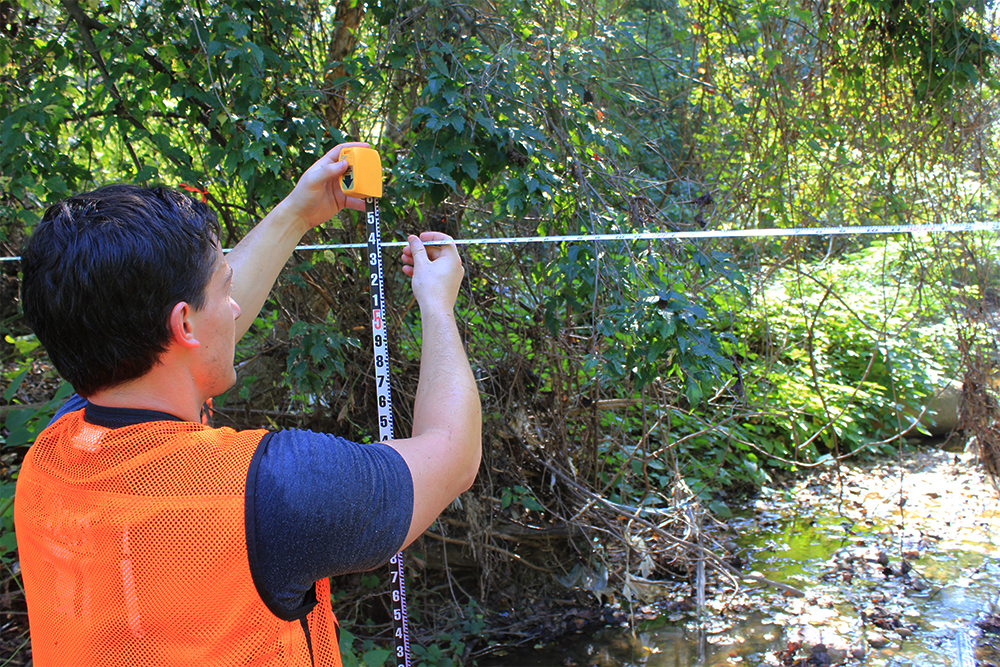
Pebble Counts
A pebble count is also performed at each of these marked locations. This process is used to aid in stream classification and to quantify the stream’s ability, or inability, to mobilize cobble, gravel and smaller substrate materials. These counts are performed by analyzing a total of at least 100 particles within each cross section. This process takes two people (and a whole lot of patience) – one person who uses a metric ruler to measure the intermediate axis of each particle and a note-taker who records each measurement.
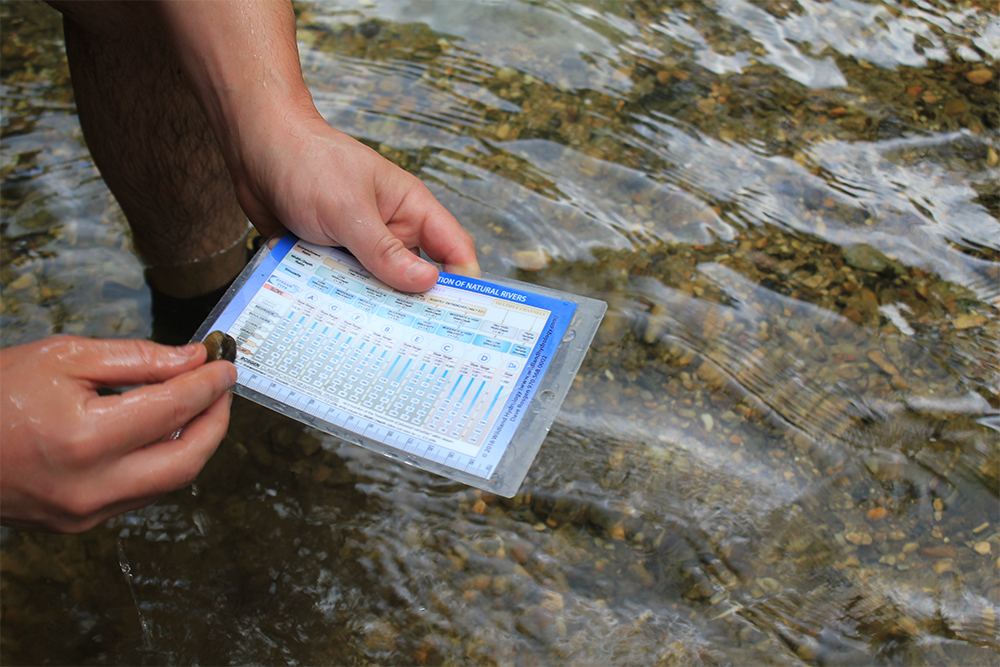
After two long days of data collection, our team had enough information to start the design process. Once the restoration is complete, vegetation and aquatic habitat will flourish along the stream corridor and heavy erosion will no longer contribute to high levels of sediment, nitrogen, and phosphorus presence within the stream and its surrounding waterways.
To learn more about Timmons Group’s Stream Team, visit our website here: {page_505}




